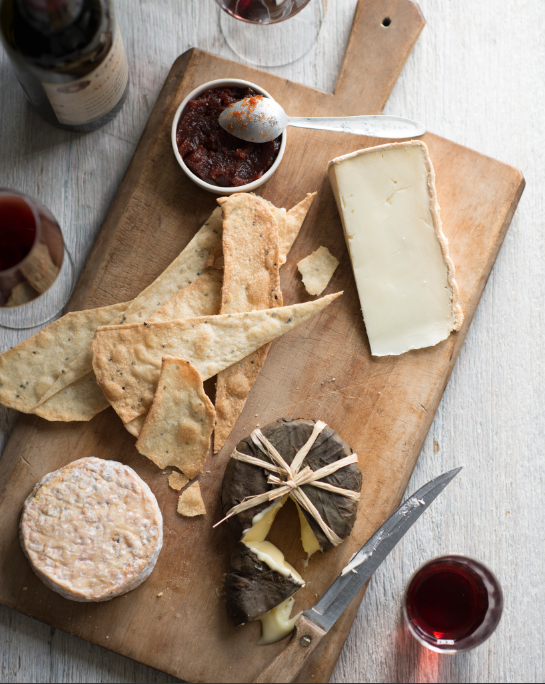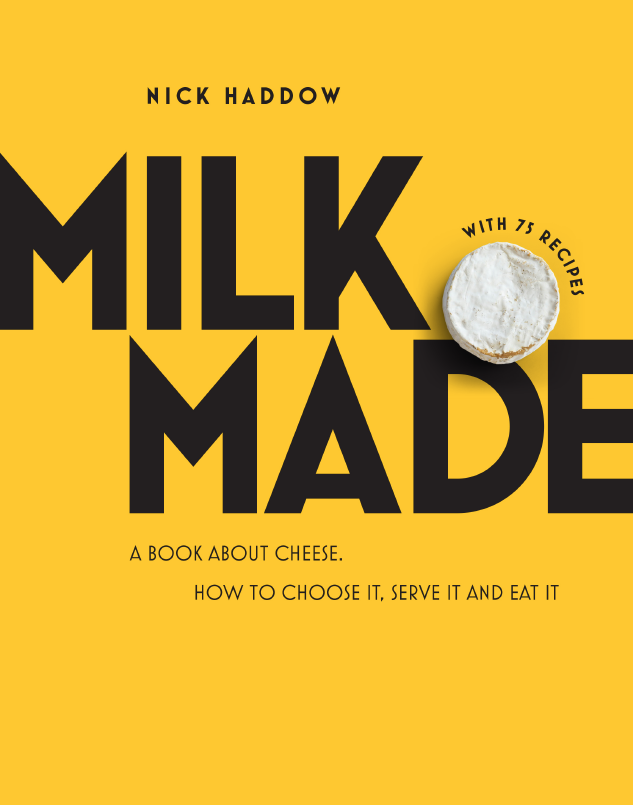Creating the Perfect Cheese Platter with Milk. Made.
Creating the Perfect Cheese Platter with Milk. Made.
8 Aug 2016 |
For Nick Haddow, author of Milk. Made., there are two options for creating the perfect cheese platter:
The knockout blow: This is my preferred option; the less is more approach. A single, awesome cheese that is the result of a very thoughtful choice. A cheese in perfect condition and one that is visually wonderful, texturally sublime and delivers incredible flavour. A cheese so good that putting anything else on the board would detract from it.
Here are a couple of examples to give you the idea:
- Cloth-matured cheddar with Chorley Cakes and stout.
- A strong blue cheese with Rye and Molasses Biscuits and vintage port.
- A pungent washed rind with sourdough bread and cider.
The multiple-choice statement: In some instances,
it is more ideal to serve several cheeses together. If this is the case, then your number one rule is BALANCE. To achieve this, you will need more than two cheeses but less than five. Balance means finding a diversity of styles, age profiles, flavours, textures and milks. What you don’t want is three cheeses that are too similar. A soft goat’s cheese, a sheep’s milk blue and a hard cow’s milk cheese is a great mix, for example.
Regardless of which path you venture down, make sure your cheese is completely at room temperature before serving. I prefer to serve cheese on a simple wooden board because it is a natural product and a plain background which lets the cheese stand out. A slate or terracotta tile is also a good option.
How to cut your cheese
Another thing I am rather fussy about is knives. Make sure you provide a knife for each cheese so that you don’t get bits of your blue cheese mixed in with your subtle goat’s cheese.
The rule is that when you are cutting some cheese for yourself, take your fair share of the rind with you. Don’t just dig in to the middle with no respect for either the cheese or your fellow cheese eaters. If it is a round of cheese then cut a wedge from the middle, mimicking the spokes of a wheel. If it is a wedge of cheese, cut a slice from the side, taking some of the rind with you.
Bread or crackers?
Perhaps the question you should really ask is do you need anything at all? Personally, I like to taste the cheese and enjoy its texture without anything else. Hard cheeses can be sliced and eaten with fingers, allowing you to fully appreciate their flavour and texture. Some people – more delicate than myself – prefer to use bread or crackers for their soft cheeses to keep their fingers clean. Each to their own.
If you are going to serve crackers or bread with your cheese, there are a couple of directions you can take. You can go for something neutral in flavour so that the cheese shines through; or you can try and complement your cheese with a flavoured bread or cracker.
Cheese accompaniments
As I’ve already said, a good cheese itself does not need anything to make it better, but sometimes a well considered accompaniment can enrich the whole experience of enjoying cheese. Generally, other than a beautiful crisp apple or pear, fresh fruit is rarely the best option as the natural acid in fruit can be a bit unfriendly to cheese. I love the flavours that arise from cooked fruit, in the form of compotes, jellies, jams or membrillos because the acid is tempered and you can control the level of sweetness. Autumn fruits like apples, pears, figs and quinces seem to work better than summer berries or tropical fruit. On Bruny Island we spice cherries from a local orchard and they are terrific with most cheeses.
Always choose an accompaniment that will complement the flavour of the cheese rather than compete with it. Sugar will balance salty (think classics such as Gorgonzola drizzled with honey or an aged cheddar served with dense fruit cake) and acid will complement acid (a young, tart goat’s cheese with slices of crisp, fresh pear, for example).
This is an edited extract from Milk. Made. by Nick Haddow published by Hardie Grant Books RRP $55 and is available in stores nationally.

